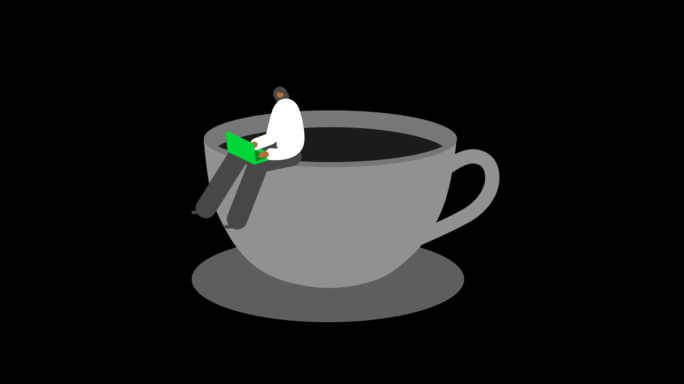Growth & Customers
Top three pricing mistakes to avoid

On my radio show, The Soul of Enterprise, with VeraSage Institute Founder Ron Baker, we often explore the topic of pricing and its impact on businesses of all sizes.
At the intersection of marketing, strategy, economics, psychology and even accounting, I find pricing to be the most fascinating aspect of a business. Oddly, it remains a subject that most small businesses know little about. What’s worse is that certain beliefs blockade their thinking causing mistakes which all too often prevent a company from inception.
Before, I share these common mistakes, I believe it is important to share that price is the number one driver of profitability in almost any business. AT Kearney and McKinsey have both done studies which demonstrate that a one percent increase in price across the board yields a seven to 11 percent increase to profit. This compares to a one to three percent increase to profit from a one percent reduction in fixed cost, a three to four percent increase due to an additional revenue, and a five to seven percent increase due to a reduction of fixed cost (i.e., efficiency gains) usually considered the Holy Grail of business acumen.
To demonstrate the power of pricing, simply do your own One Percent Windfall. Take your top line revenue and multiply by .01, then add that number to your net profit (turnover) and compare the difference to your actual income. In most cases, the percentage difference will fall between seven and 11 percent. That is the power of pricing!
Sadly, few companies pay a lot of attention to their pricing and worse still when they do pay attention they tend to make some serious mistakes. As the philosopher, Lawrence Peter Berra once quipped, “Our problem was, we made the wrong mistakes.” Poor pricing is a mistake.
Let’s take a brief look at the top three mistakes:
1. Price is not based on cost
If I could send executives to the Bart Simpson chalkboard of life, I would have to write, “Price is not based on cost,” over and over again. Notice, this is not to say that costs are not factor in pricing, they can be, but far too many brilliant people believe that prices are determined by a formula that begins and ends with cost. Much to my dismay this is often reinforced by accounting systems that present cost-plus pricing as an option in their inventory systems.
Prices are determined by understanding the perceived value of the prospective customer. This value is subjective and can vary from prospect to prospect over time. As an example, a quart of water is valued more highly at a sporting event then the same quantity if you at home washing dishes. It is undoubtedly more valuable than if water was flooding your basement in which case the water has negative value.
Interestingly, the cost difference to get the dihydrogen monoxide to those three locations is inconsequential. The reality is that price, rather than being derived from costs, should justify the future expenditure of cost. The logic chains like this:
Value → Price →Cost, not Cost → Price → Value.
2. Don’t price too low
The second wrong mistake dooms many businesses in the cradle. Professional pricers believe there are three and only three overarching strategies: skim, neutral and penetration.
Skimming does just want the name implies; it skims the cream off the top. Apple has created near $1 trillion in market capital by using mostly skim pricing. Neutral is also fairly self-explanatory – pricing in the middle of the pack, neither too high, nor too low. Penetration pricing refers to attempting to penetrate a current market by undercutting incumbents with a lower price. The problem is once your organization gets tagged as the low-price challenger, it is especially difficult to overcome that moniker.
To overcome these many companies have used what used to be called a loss-leader. Today, we call it Freemium. To gain a foothold, products are introduced with a low or even free price with the ability to upsell for added perceived value.
This leads to our third wrong mistake.
3. Choices are the key
As humans, we are predisposed to like options. From the time we are very young, we get frustrated when we feel we do not have some say in our actions. Kids on a playground will respond much differently if they are told what to do – “We are leaving in two minutes” – versus being given a choice – “Do you want to leave now or in two minutes.”
In the 1880s the Sears catalog began offering “good, better, best” models of the majority of their merchandise. It is met with some amazing successes. Today, all great pricing companies offer choices. Tall, grande, and venti at Starbucks. Ground, two-day and overnight shipping at FedEx. Heck, your car wash probably sells Olympic-sounding gold, silver and bronze level services.
One of the more famous involves a fast food joint that once only offered single and double burgers. Upon the introduction of the triple burger, which few bought, sales of the double skyrocketed. Since the margin on the double was significantly higher than the single, profits did as well.
The right mistakes
The right mistakes to make when pricing:
- Price based on perceived value.
- Price higher than you think, at least initially.
- Offer at least three choices in pricing.
Why are these “mistakes?” Just because you do these does not guarantee success, pricing is more art than science, you can easily make adjustments and learn from them.
Happy pricing!








Ask the author a question or share your advice